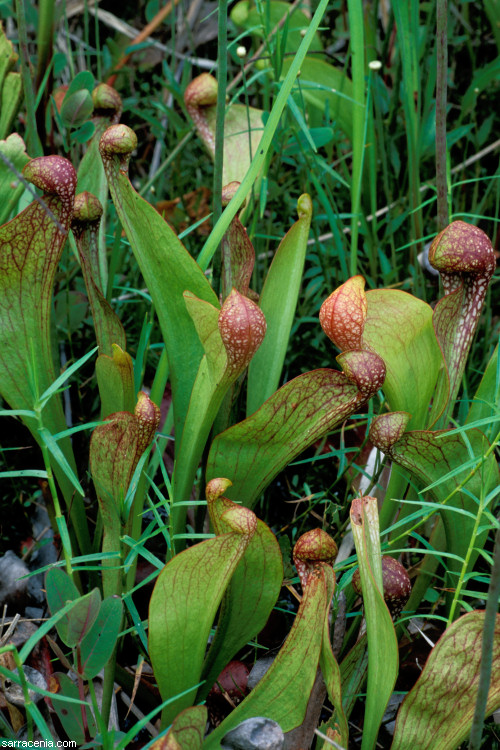
Upright leaves:
I think it is interesting that the
leaves of these plants were mostly upright--the ground-hugging form
was not expressed (compare, for example
these Alabama plants.)
I first thought this might be an adaptation for living in frequently
flooded conditions, but I have trouble reconciling this explanation with
the oft-told tale that the species has adaptations for living in
submerged conditions. (If the species has horizontal leaves that are
adapted for being flooded, why would the leaves become vertical if the
plants were grown in a particularly wet area where they would be more
prone to flooding? Why not stay horizontal and use those supposedly
useful adaptations?)
Were the leaves light-starved? Sometimes they did look etiolated, but
that certainly is not the case with these nicely colored leaves! Also,
even the plants growing in bright sun with little competition from
grasses or other plants had upright leaves.
We saw several hybrids between Sarracenia psittacina and
Sarracenia minor var. okefenokeensis (i.e.
Sarracenia ×formosa), but none were
really worth photographing. They were taller and lankier than
Sarracenia ×formosa usually looks. But all the plants
we saw had only one or two pitchers, and were not very
photogenic
If you want to see Sarracenia psittacina or
Sarracenia ×formosa in the swamp, stick to the path
between Kingfisher Landing and Bluff Lake--it was the only place we
saw them. We also saw a few Sarracenia flava and
Sarracenia ×harperi on this stretch, too. The best views are
within a few miles of Bluff Lake.